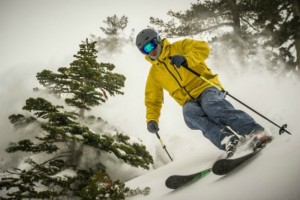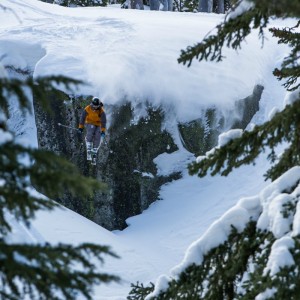Golfers who regularly hit their drive long and straight don’t do it by accident. Basketball players who methodically make free throw after free throw aren’t lucky. And tennis players with perfect ground strokes that can be repeated over and over again didn’t come by the skill naturally.

What the big hitter in golf, the high percentage free-throw shooter and the skilled tennis player have in common is knowledge and perseverance. All three have worked hard to perfect their craft, diligently working long hours at their particular sport.
Those same qualities also can be found in expert skiers. No one successfully masters a double black diamond run without possessing solid technique and putting in the time it requires to master more difficult terrain.
To ski extreme terrain, one needs to build confidence over time. One of the main things to remember is patience. Don’t gaze down at an advanced run and say, “I think I’ll try that today.” Build confidence over time and avoid taking unnecessary chances.
5 Tips to Become an Expert Skier
- Your most important and versatile piece of equipment is your pole. A good pole touch is a box of tricks that encourages timing, balance, good biomechanics, aggression, turning power, tactics and ultimately, a progression to expert terrain.
- Upper/lower body separation. Though your skis may be completing a turn across the hill, your upper torso, from the hips up, should already be anticipating the next turn down the hill.
- A dynamic short radius turn. With an efficient short turn, the expert skier comfortably skis bumps, steeps, trees and slalom gates.
- Good biomechanics will promote good ski mechanics. Being in the right position physically will bring out the best in your ski’s performance.
- The mental game. Skiing is counter-intuitive. Our brains tell us to back off when faced with danger. Expert skiers have reprogrammed their minds to trust that the right techniques will control their movements when skiing tough terrain.
What many people overlook is taking a lesson. Skiers take a lesson when they start out, so why not take a lesson when trying to make the ascent from good to expect?

Learning without an instructor can be accomplished if patience and practice are part of the formula. Trial and error is a suitable method as long as it is done with safety in mind. Many times skiers do out-of-control things or radical stuff that they see in ski and snowboard films. They are being reckless and endangering not only themselves, but other people as well.
One tip is entering an expert run at mid-level is one way to ease into tougher terrain. That not only decreases the speed factor, but reduces the number of turns that will need to be executed before getting to the bottom. The idea is to build up to where you are doing the entire run.
Another method is practicing the proper technique, where the skis are always parallel and turns can be quickly executed at fairly high speed, on easier runs instead of expert trails. That helps build confidence, which can be a fragile thing on a difficult run, especially for people who are going at high speed with limited control.
Confidence is important. Skiers need to be focused on what they are supposed to be doing, not thinking about how intimidating the run might be. Overlooked at times is the importance of pole usage when looking to make the jump from good to great skier.
A good pole touch is a box of tricks that encourages timing, balance, good biomechanics, aggression, turning power, tactics and ultimately, a progression to expert terrain.
To reach that elite level faster, many people are now opting for private lessons. It is the safest and quickest method to progress.
Jeffrey Weidel can be reached at [email protected]. Follow him on Twitter @jeffweidel and visit his website at www.tahoeskiworld.com.